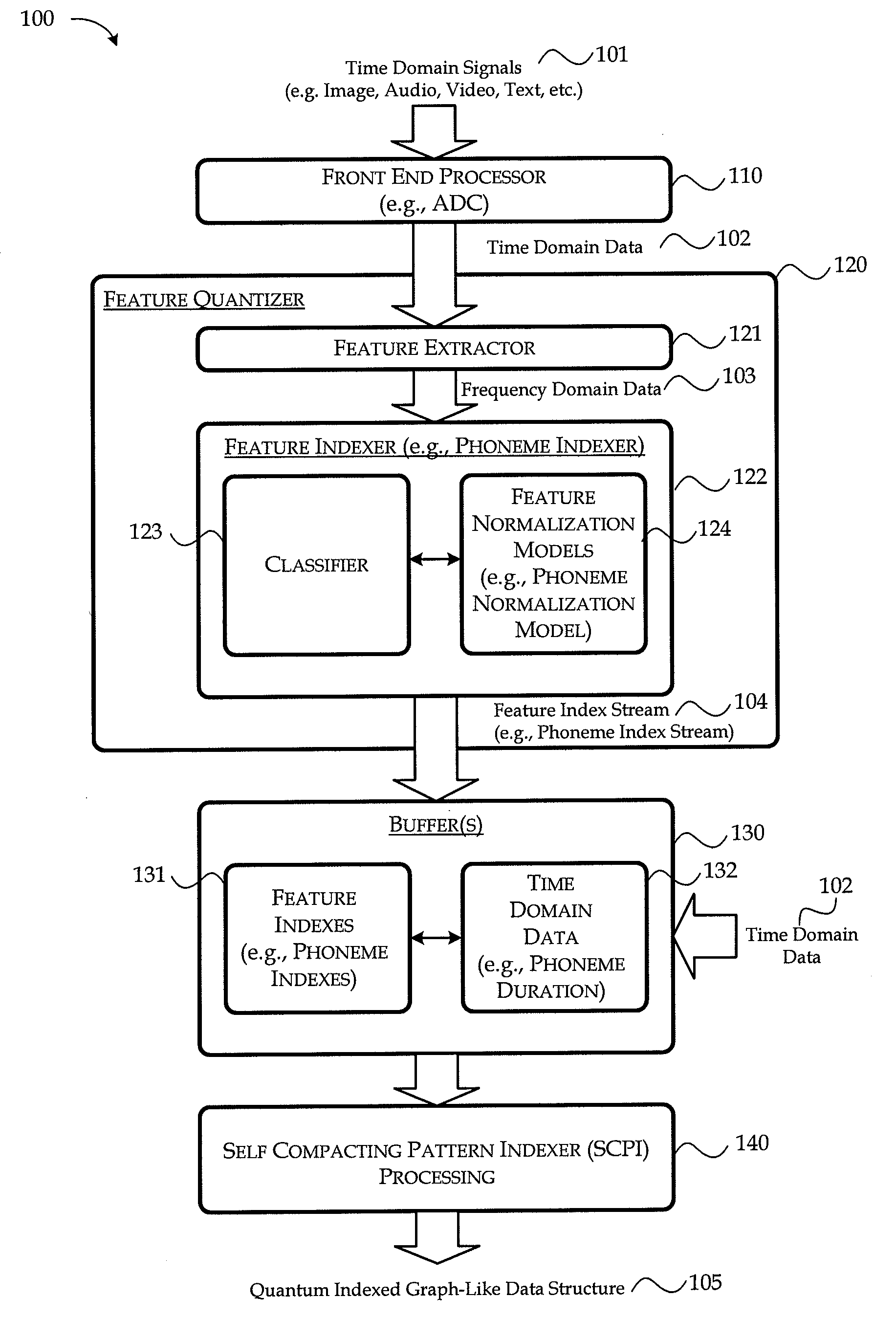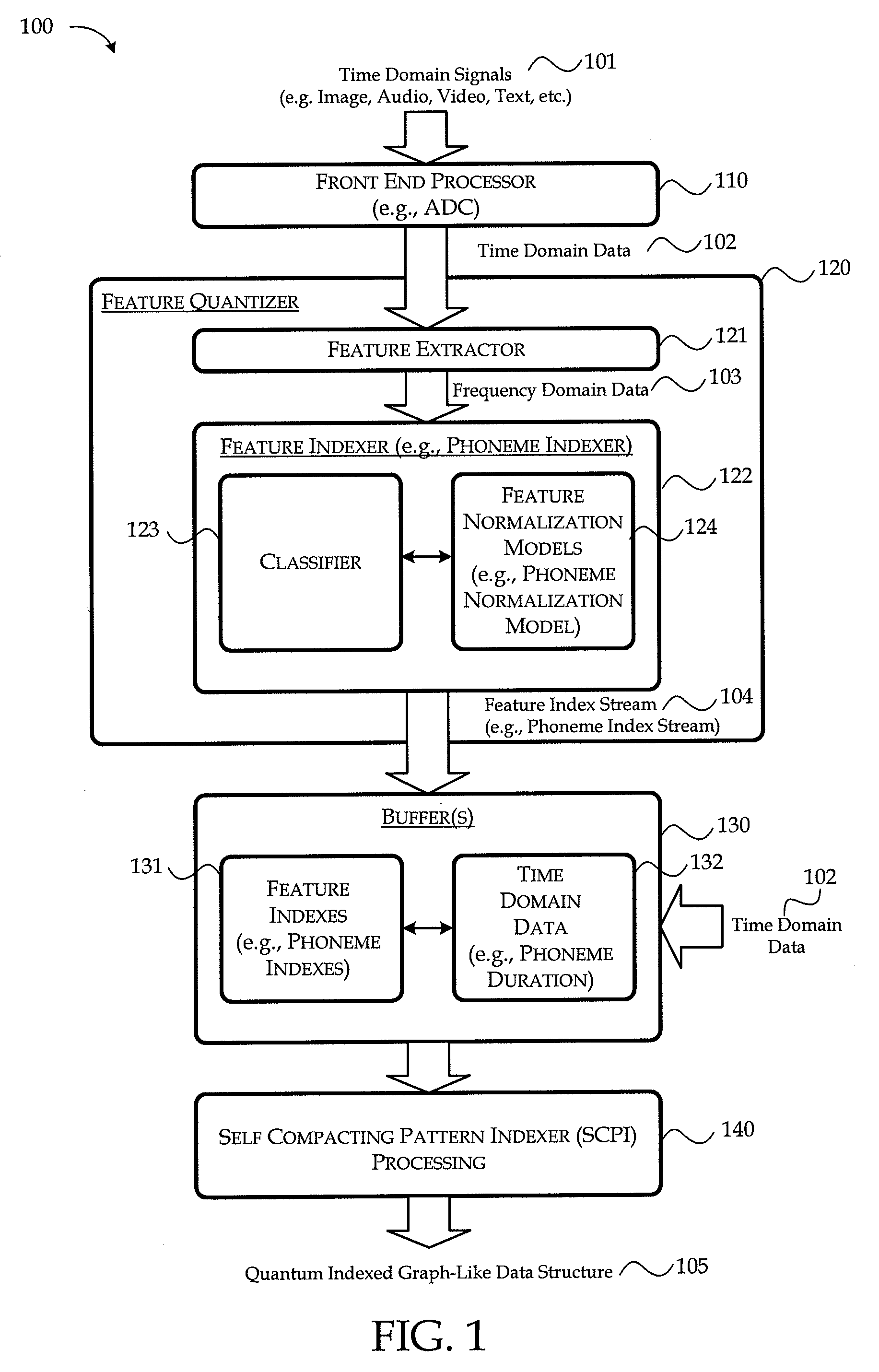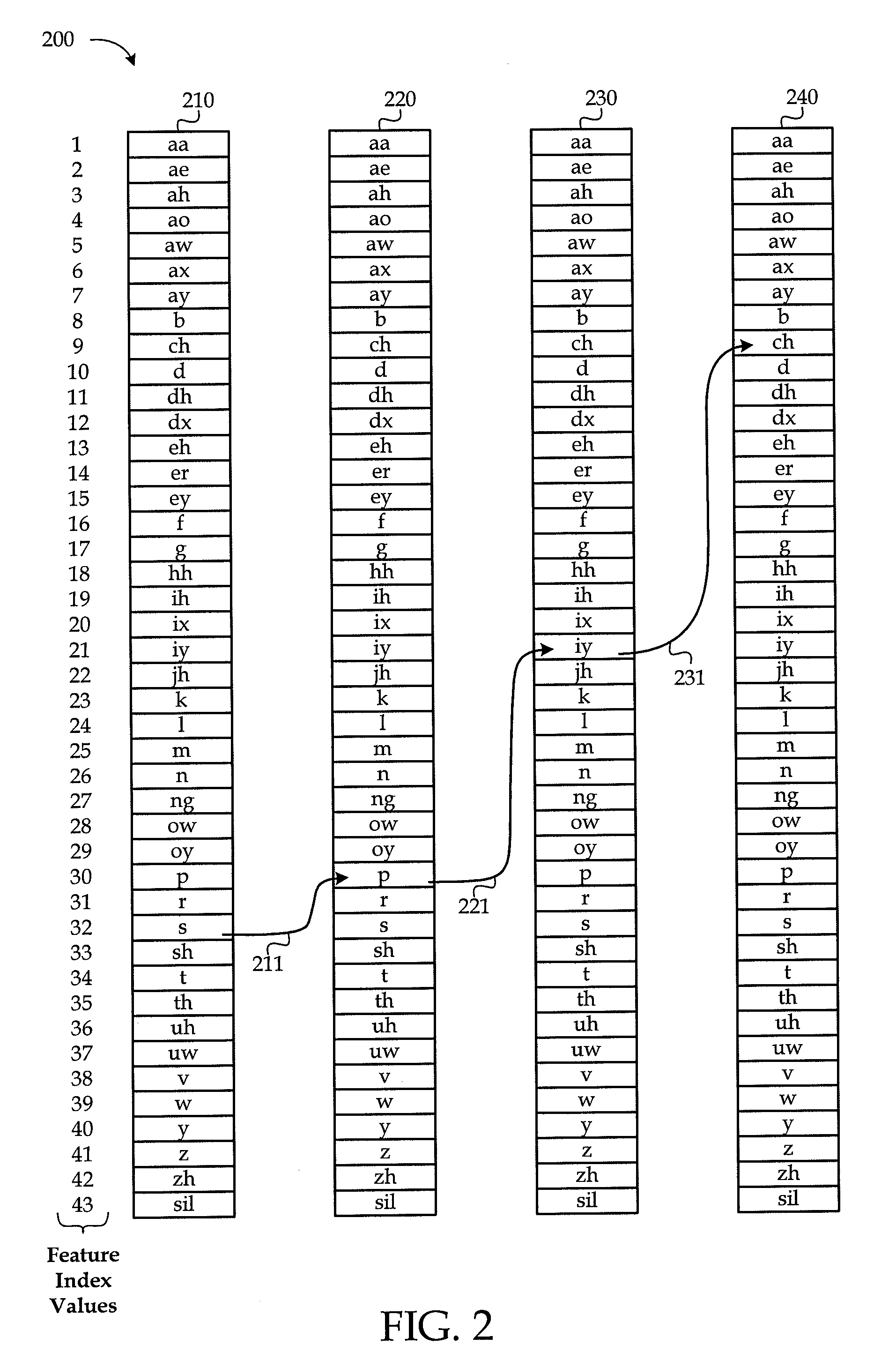Self-Compacting Pattern Indexer: Storing, Indexing and Accessing Information in a Graph-Like Data Structure
a data structure and self-compacting technology, applied in the field of indexing methods, can solve the problems of structure imposing data entry cost, imposing semantic constraints and assumptions, and multiple storage of same information multiple times
- Summary
- Abstract
- Description
- Claims
- Application Information
AI Technical Summary
Problems solved by technology
Method used
Image
Examples
example hashing
Process
[0111]FIG. 10 is a flow diagram illustrating an example operational process (1000) for generating hashing codes in accordance with at least some features of the present disclosure. The hashing process can be used to quickly identify a node in the quantum-indexed graph-like data structure from the incoming symbol stream (e.g., in a query) without requiring a manual search through the data structure.
[0112]Symbols from a sequence are identified at block 1010. Processing continues to block 1015 where the preexisting codes in the data structure are identified as old codes. At block 1020 a new code identifier is computed from the new symbol (e.g., a new feature index such as a phoneme index, an alphabetic character, a set of feature indexes according to the minimum atomic value, etc.) by hashing: NewCode=(NewSymbol1025, the new code (i.e., NewCode) is evaluated to determine if the new code is already in use. In some examples the NewCode is a used as a seed to a code generator so th...
example tables
Using Heuristic Scoring Process
[0126]FIGS. 12A-11B are graphical diagrams illustrating an example heuristic scoring process (1200, 1200′), arranged in accordance with at least some features of the present disclosure.
[0127]For the example described below, an utterance (1201) for the phrase “cars are scarier than scarves” is processed and compared to a query (1203) for “scarves”. Each symbol in the query (1203) “scarves” is mapped to an index number (1202) as illustrated.
[0128]For the described example a pattern matching length of 2 or 3 is utilized. The query term “scarves” is broken into 11 subsequences for pattern matching, namely: “sc”, “ca”, “ar”, “rv”, “ve”, “es”, “sca”, car”, “arv”, “rve” and “ves”, as illustrated by 1204 in the figure. Each subsequence is compared to utterance 1201 to determine if the utterance matches the query term, as is illustrated by rows 1205. Each cell in row 1205 is either empty or contains an index number for those patterns that match. For example the...
PUM
 Login to View More
Login to View More Abstract
Description
Claims
Application Information
 Login to View More
Login to View More - R&D
- Intellectual Property
- Life Sciences
- Materials
- Tech Scout
- Unparalleled Data Quality
- Higher Quality Content
- 60% Fewer Hallucinations
Browse by: Latest US Patents, China's latest patents, Technical Efficacy Thesaurus, Application Domain, Technology Topic, Popular Technical Reports.
© 2025 PatSnap. All rights reserved.Legal|Privacy policy|Modern Slavery Act Transparency Statement|Sitemap|About US| Contact US: help@patsnap.com



